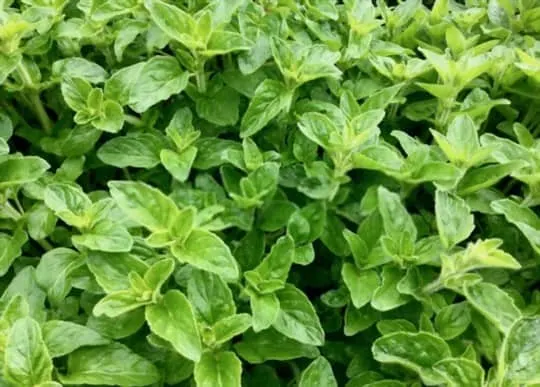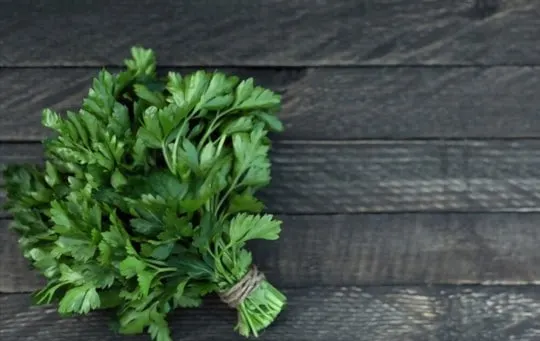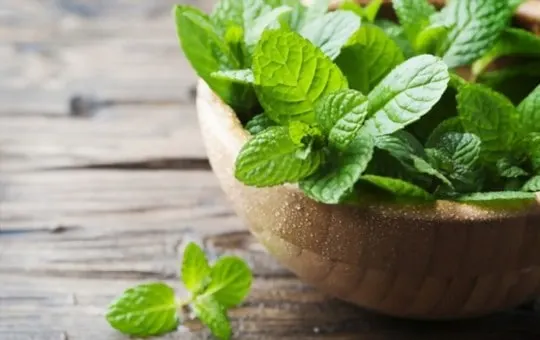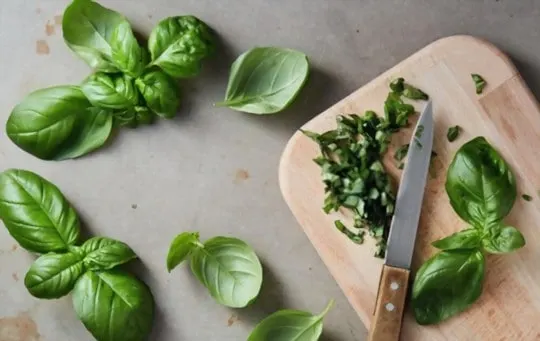Basil is a popular herb used in a variety of different culinary dishes and for its many health benefits.
But did you ever wonder how best to use it? And what can you do when basil isn’t available?
Knowing the five best substitutes for basil can help enhance your meals with plenty of flavor and nutrition, even when the herb is not on hand.
From oregano to marjoram, these alternatives will make sure your recipes don’t suffer from any taste or nutrition deficits.
Take a look at how each substitute measures up to that of basil, and learn how to make them part of your cooking experience.
What’s Basil?

Basil is a wonderfully aromatic herb often used in Italian and Mediterranean cuisine.
It has been used for hundreds of years, giving a pungent, sweet tang that enhances the flavors of many dishes.
Additionally basil is often a key ingredient in pesto, adding to its versatility.
The leaves are soft and pointed, with a distinct flavor that is slightly sweet and earthy with hints of pepper.
To best enjoy its flavor, it is recommended to add it towards the end of the cooking process as prolonged heat can diminish the flavor profile.
In addition to being practical in the kitchen, basil can also be incorporated into salads or enjoyed as an herbal tea.
When purchasing basil at the market or grocery store make sure to buy fresh bunches rather than dried flakes which tend to lack in taste and texture.
All-in-all it’s easy to see why this beloved herb is held in such high esteem by those who frequent their local Farmer’s Markets.
The 5 Best Substitutes for Basil in Cooking
Cooking without certain ingredients can be difficult, especially when essential herbs like basil are missing.
Basil is an aromatic and flavorful herb that is used in a variety of dishes.
While there is no one exact substitute for its taste and aroma, there are some options that can help you replicate similar flavors in your cooking.
Here’s a detailed comparison of the 5 best substitutes for basil in recipes, along with their key characteristics and proper ratios:
| Substitute | Key Characteristics | Proper Ratio |
|---|---|---|
| Oregano | Has a strong and robust flavor. It is slightly bitter with hints of sweetness and a peppery undertone. | Use 1 to 1 ratio with basil |
| Parsley | Has a mild and fresh flavor with a slight hint of bitterness. It adds a bright and herbaceous element. | Use 1 to 1 ratio with basil |
| Mint | Has a cool and refreshing flavor with a hint of sweetness. It can add a bright and aromatic note to dishes. | Use 1 to 1 ratio with basil |
| Thyme | Known for its earthy and slightly floral flavor. It adds depth and complexity to savory dishes. | Use 1 to 1 ratio with basil |
| Cilantro | Has a distinct, citrusy flavor with a hint of peppery taste. It is commonly used in many cuisines. | Use 1 to 1 ratio with basil |
Now let’s explore each substitute in more detail:
1 – Oregano

Oregano is a popular substitute for basil in many recipes.
When substituting oregano for basil, use half the amount of the recipe calls for in basil as oregano has a much stronger flavor than basil.
Oregano can be used as a seasoning for soups, stews, sauces, pizza and other Italian dishes.
Just be sure not to overdo it.
Too much oregano can make a dish taste overly strong and overly spicy.
Thyme is another good substitute for basil that has an earthy flavor and adds depth to any dish.
While it does have a subtle minty flavor like basil, it’s generally not as sweet or tangy as fresh basil.
Thyme can be used to season sauces, dressings, marinades and roasts — just like fresh or dried Basil.
Marjoram is milder than oregano or thyme but still packs its own unique flavor so don’t be afraid to use it in place of basil in your recipes.
It’s best used fresh as the dried variety tends to lose its flavor rather quickly when exposed to heat or air.
Marjoram pairs well with vegetables, tomato sauce-based dishes and meat stews.
Parsley is more commonly known as an herb garnish but what many people don’t know is that it can also stand in for Basil in some dishes.
Parsley adds a deep herby note with hints of citrus undertones which make it perfect for adding depth of flavour to fish or vegetable-based dishes such as casseroles and salads.
Mint has many uses in cooking due to its refreshing flavor profile that offers tangy sweetness with grassy herbal tones.
Although mint isn’t exactly like Basil it still works wonderfully when added alongside some garlic and olive oil into strained yogurt based dishes like tzatziki (Greek cucumber dip).
Freshly chopped mint also works really nicely when scattered on top of roasted vegetables such curried carrots or roasted potatoes (a match made in heaven.
).
2 – Parsley

Parsley is a common herb used in cooking and is often used as a substitute for basil.
It has an aroma similar to that of basil, but it has a milder flavor.
Parsley can work well when added to salads, soups and sauces, although its mild flavor may be too subtle for some dishes.
Some suggest adding double the amount of parsley than the recipe suggests for basil.
If you’re looking to substitute fresh herbs, you can replace one tablespoon of fresh basil with two tablespoons of fresh chopped parsley.
Parsley is also popularly used in marinades and as a garnish.
3 – Mint

Mint is both sweet and flavorful and can be used in many dishes that might otherwise call for basil.
Mint comes in several varieties that are easy to find, such as spearmint, peppermint, chocolate mint and other more exotic varieties.
Its flavor profile is similar to basil yet more assertive, making it an ideal companion for pizza, pasta dishes, pestos and even desserts.
Be sure to use the leaves sparingly as its strong flavor can dominate delicate flavors if not used carefuly.
4 – Thyme

Thyme is a fragrant herb with a slightly minty flavor that works well as an basil substitute.
It’s often used with Mediterranean ingredients such as olive oil, garlic, and tomatoes.
Thyme can bring some sweet floral notes to your dish, though it’s more likely to be used to add an earthy richness than a bright freshness.
When substituting thyme for basil, the best approach is to use less since it has a stronger flavor.
Try starting with 1/2 teaspoon of thyme for every teaspoon of basil and adjust from there.
5 – Cilantro

Cilantro is most common in Latin American and Indian cuisine and adds a bright, lemony flavor to dishes.
The leaves are used in a similar process to basil leaves, but since cilantro has a stronger flavor, its best used in smaller quantities.
Cilantro is especially great when combined with other herbs like parsley and mint.
When substituting cilantro for basil, use half the amount of cilantro as the recipe calls for basil to make sure you don’t overpower your dish with cilantro’s strong flavor.
Conclusion
When it comes to herbs, basil stands out for its bright flavor and unique aroma.
But if you don’t have it on hand, you may be wondering what are the best alternatives to achieve a similar flavor without wasting time searching the grocery store shelves.
Luckily, there are several fantastic options to choose from when looking for a basil substitute in cooking.
Oregano, thyme, sage and cilantro have similar flavors and aromas as basil but will also provide additional depth and complexity to your dish.
Other great substitutes include parsley, dill and marjoram which have more subtle flavors than oregano or basil but still offer plenty of amazing taste potential.
No matter which herb you ultimately decide to go with as a replacement for basil in your recipe, your dish will still come out tasting delicious.
Whether you opt for one of these traditional substitutions or choose something that suits your own personal preference is entirely up to you.
With so much variety available when it comes to herbs, you are sure to find a solution that works well for whatever ingredients you may be using in your dishes.

The 5 Best Substitutes for Basil in Recipes
Ingredients
- 1 – Oregano
- 2 – Parsley
- 3 – Mint
- 4 – Thyme
- 5 – Cilantro
Instructions
- Choose your preferred substitute from the list of options.
- Organize all of your ingredients.Use the proper substitute to cook your recipes.
